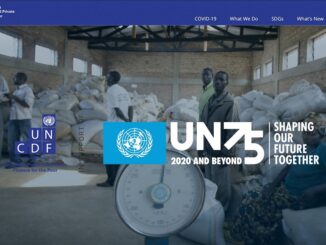
Subnational governments in Europe haven’t had it easy over the past 15 years. After the 2008-2009 global economic crisis, subnational governments in many countries in Europe were at the center of economic and fiscal reform efforts. These reforms aimed to create fiscal space for national governments by eliminating subnational public spending inefficiencies; by encouraging subnational revenue mobilization; and sought to limit overall government debt. Using an economies-of-scale approach, administrative reforms promoted larger municipalities (or inter-municipal cooperation) in order to lower service unit costs and to create networks of sizable local governments, more manageable from the center.
More recently, the year 2020 marked the global eruption of the COVID-19 pandemic, which produced a “scissors effect” of higher expenditure and revenue losses for both national and local governments. Unlike their response to the economic crisis a decade earlier, national governments and the international financial institutions promptly initiated coordinated countercyclical policies and launched intensive stimulus programs.
A recent report by the Council of European Municipalities and Regions (CEMR), Local Finances and the Green Transition: Managing Emergencies and Boosting Local Investments for a Sustainable Recovery in CEMR member countries, provides a detailed analysis and an explanatory synthesis of the evolution of subnational finances in CEMR member countries during the decade of 2010-2020. It also evaluates climate change-related aspects of local finances, primarily local capital spending on green investments. The report was produced for CEMR under the direction of Nathalie Noupadja by Gábor Péteri.
During the decade of 2010-2020, the scope of decentralization did not change significantly in CEMR countries. Overall, subnational government expenditure amounted to a share of 25% in total general government expenditure. Past public sector characteristics seem to determine country paths, as the more decentralised ones experienced an increase or lower cuts in subnational spending than the centralised ones, where subnational governments lost more of their spending powers. These changes in local functions and responsibilities, trends in capital expenditures are presented in details by the report.
On the revenue side grant dependency is still significant: ratio of intergovernmental transfers and grants in subnational budgets is more than 60% on average. Local taxation systems in the CEMR countries are predominantly based on income (personal, profit) or land and building taxes. In some countries, the local tax burden on businesses and production decreased; whereas in others, there was a slight move away from property taxation. Some convergence of local taxation systems can be observed. The level of tax autonomy itself remained stable over the past decade.
Local governments operate under a balanced budget requirement and borrowing represents a minor source of budget revenue. In the 36 countries where comparative data were available, subnational government debt remained at a manageable level. At the first tier governments the accumulated debt was below 4% of GDP, while in the federal countries, the state government debt reached 15% of GDP.
The report provides an overview of the Recovery and Resilience Facility (RRF), the major European Union financing mechanism. Climate change and digital transition will be central to EU plans and funding policies: EUR 672.5 billion is available as a grant (EUR 312.5 billion) and as a loan (EUR 360 billion) over the 2021-2026 period.
Conclusions and recommendations of the report are based on detailed data analysis. The study is also enriched by 25 national reform examples and cases on local level innovations.
The full report, the Council of European Municipalities and Regions, Local Finances and the Green Transition: Managing Emergencies and Boosting Local Investments for a Sustainable Recovery in CEMR member countries (CEMR 2022) is available in English for download from the website of Council of European Municipalities and Regions (CEMR). Detailed data on regional and local government finances in CEMR countries–upon which the report is based–is available from CEMR’s website at: https://www.localfinances-cemr.eu/
The Council of European Municipalities and Regions is the largest organization of local and regional governments in Europe. Its members are 60 national associations of towns, municipalities and regions from 41 countries that are part of the Council of Europe.



